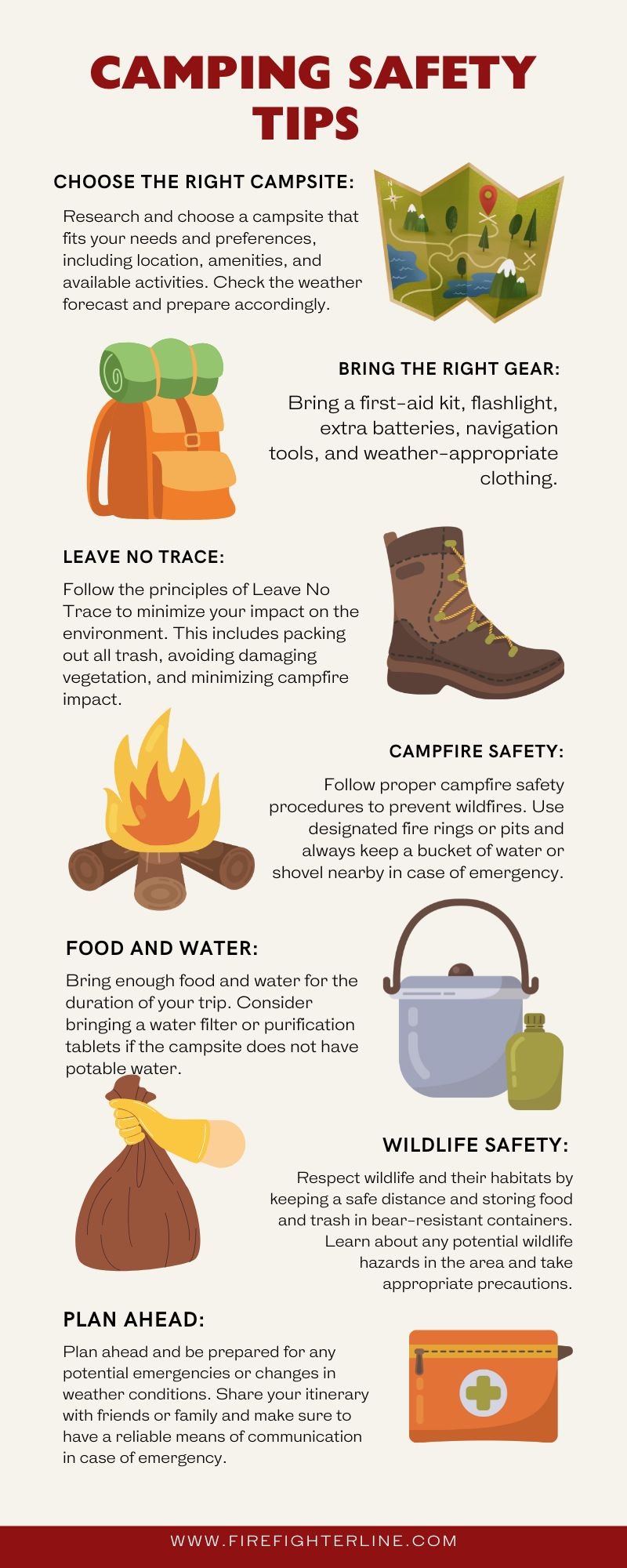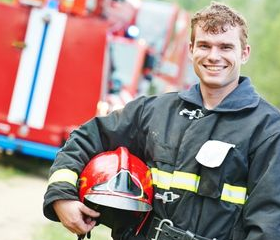Must-Know Camping Safety Tips Before Your Next Trip
Camping gives you freedom, fresh air, and time away from busy routines. But with the outdoors comes responsibility.
Fires, unpredictable weather, or even simple mistakes can put you at risk.
That’s why following camping safety tips is so important. With the right knowledge, you can avoid problems and make the most of your trip.

Contents
- 0.1 Plan Ahead Before You Go
- 0.2 Pack the Right Gear
- 0.3 Fire Safety Matters
- 0.4 Food Safety and Storage
- 0.5 Wildlife Awareness
- 0.6 Stay Hydrated and Drink Safely
- 0.7 Navigation and Trail Safety
- 0.8 Protect Yourself From Weather
- 0.9 Personal Hygiene and Sanitation
- 0.10 Emergency Preparedness
- 0.11 Group and Family Safety
- 1 FAQs
Plan Ahead Before You Go
Every safe camping trip begins before you even leave home. Research the campsite’s rules, check local wildlife warnings, and look at the weather forecast.
Always let someone know your location and expected return time. If an emergency happens, that simple step ensures someone will come looking for you.
Pack the Right Gear
Your gear is your lifeline outdoors. Bring a first-aid kit, flashlight, extra batteries, navigation tools, and weather-appropriate clothing.
A whistle, duct tape, and multi-tool can be handy in unexpected situations. Don’t pack just for comfort—pack for safety and survival.
Fire Safety Matters
Campfires can make nights magical, but they also cause most camping accidents. Build fires only in designated pits or rings and never leave flames unattended.
Keep a bucket of water or sand nearby to control sparks. Before sleeping or leaving camp, make sure the fire is fully out and the ashes are cool.
Food Safety and Storage
Animals can smell food from miles away. Store all food in sealed containers, bear-proof lockers, or your car if regulations allow.
Never eat or cook inside your tent, since lingering smells attract wildlife. Wash your hands and dishes with biodegradable soap to prevent illness.
Wildlife Awareness
Wildlife encounters are exciting but dangerous if handled poorly. Always watch animals from a distance and resist the urge to feed them.
Feeding wildlife not only puts you at risk but can also harm the animal. In areas with bears or larger predators, keep bear spray or deterrents easily accessible.
Stay Hydrated and Drink Safely
Dehydration is one of the most common camping problems. Bring a water bottle or hydration pack and refill often, especially in hot weather.
Natural water sources may look clean, but bacteria and parasites can be invisible. Use filters, purification tablets, or boiling methods to make water safe before drinking.
It’s surprisingly easy to get lost, even on marked trails. Always carry a map and compass as backups to GPS devices, which can fail without signal or battery.
Stay on official paths and avoid shortcuts that could lead you into unsafe terrain. If you’re hiking, travel with at least one partner to stay safer.
Protect Yourself From Weather
Weather conditions in the U.S. can change in minutes. Bring layered clothing, waterproof jackets, and sun protection like hats and sunscreen.
If lightning strikes nearby, stay away from ridges, open fields, and tall isolated trees. Planning for multiple weather scenarios keeps you safer and more comfortable.
Personal Hygiene and Sanitation
Poor hygiene outdoors can lead to illness. Wash hands before meals and after bathroom use, even if it’s just with sanitizer.
If there are no toilets, dig a 6–8 inch cat hole away from water sources to dispose of waste responsibly. Always pack out trash so you leave the area clean for the next campers.
Emergency Preparedness
Accidents don’t give warnings, so preparation matters. Carry a fully stocked first-aid kit, emergency blanket, whistle, and multi-tool.
Learn how to treat cuts, burns, or sprains before you leave. Even small injuries can become serious without quick attention in remote locations.
Group and Family Safety
Camping with kids and pets adds joy but also extra responsibility. Set clear rules for children, like not wandering out of sight and avoiding water alone.
For pets, bring leashes, food, and bedding to keep them safe and comfortable. Make sure everyone in your group knows campsite rules and what to do in emergencies.
FAQs
How to be safe during camping?
Be safe by planning your trip, bringing the right gear, and following campsite rules. Always practice fire safety, store food properly, and respect wildlife. Carry a first-aid kit and let someone know where you’ll be camping.
What is the risk while camping?
The biggest risks include wildlife encounters, dehydration, injuries, weather changes, and food-related illness. Most of these risks are preventable with proper preparation and awareness.
What do you need for camping safety?
You’ll need a first-aid kit, navigation tools, safe food storage, water purification methods, proper clothing, and lighting equipment. These essentials prepare you for emergencies and make your trip more secure.
Final Thoughts
Camping is about fun, freedom, and connection with nature—but safety must always come first.
By following these camping safety tips, you protect yourself, your loved ones, and the environment.
Whether it’s planning ahead, staying hydrated, or respecting wildlife, small precautions go a long way. Stay safe, enjoy the journey, and create memories that last for years to come.

Hi, I m Aaron Smith, a firefighter, and creator of Firefighterline.com, a website that provides top-notch training courses for firefighting organizations. After completing my studies, I quickly rose through the fire service ranks, eventually becoming Captain at one of the busiest fire departments in the state.
